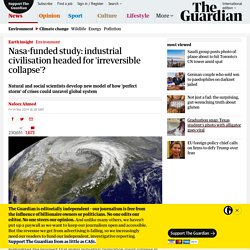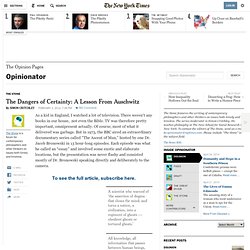

One reason why Earth is the perfect place to live. "Our presence on Earth is dependent upon this carbon cycle.

This is why life is able to survive," says Mark Torres. (Credit: J. Stephen Conn/Flickr) Part of the reason why Earth has become neither sweltering like Venus nor frigid like Mars is because our planet has a built-in carbon dioxide regulator. The geologic cycles act as a regulator by churning up the planet’s rocky surface, according to evidence documented by an international team of researchers. Scientists have long known that “fresh” rock pushed to the surface via mountain formation effectively acts as a kind of sponge, soaking up the greenhouse gas CO2. And while volcanoes have long been pointed to as a source of carbon dioxide, alone they cannot balance out the excess uptake of carbon dioxide by large mountain ranges.
Instead, it turns out that “fresh” rock exposed by uplift also emits carbon through a chemical weathering process, which replenishes the atmospheric carbon dioxide at a comparable rate. ‘Big, natural recycler’ Nasa-funded study: industrial civilisation headed for 'irreversible collapse'? A new study partly-sponsored by Nasa's Goddard Space Flight Center has highlighted the prospect that global industrial civilisation could collapse in coming decades due to unsustainable resource exploitation and increasingly unequal wealth distribution.

Noting that warnings of 'collapse' are often seen to be fringe or controversial, the study attempts to make sense of compelling historical data showing that "the process of rise-and-collapse is actually a recurrent cycle found throughout history. " Cases of severe civilisational disruption due to "precipitous collapse - often lasting centuries - have been quite common. " The independent research project is based on a new cross-disciplinary 'Human And Nature DYnamical' (HANDY) model, led by applied mathematician Safa Motesharrei of the US National Science Foundation-supported National Socio-Environmental Synthesis Center, in association with a team of natural and social scientists. Detection of Waves in Space Buttresses Landmark Theory of Big Bang. Photo CAMBRIDGE, Mass. — One night late in 1979, an itinerant young physicist named Alan Guth, with a new son and a year’s appointment at Stanford, stayed up late with his notebook and equations, venturing far beyond the world of known physics.

He was trying to understand why there was no trace of some exotic particles that should have been created in the Big Bang. Instead he discovered what might have made the universe bang to begin with. A potential hitch in the presumed course of cosmic evolution could have infused space itself with a special energy that exerted a repulsive force, causing the universe to swell faster than the speed of light for a prodigiously violent instant. If true, the rapid engorgement would solve paradoxes like why the heavens look uniform from pole to pole and not like a jagged, warped mess. “SPECTACULAR REALIZATION,” Dr. On Monday, Dr. The science of optical illusions. 18 October 2010Last updated at 03:14 In the left image, the black and white spaces in the central pin-wheel seem to blend more than in the right image - though the two are the same Optical illusions are more than just a bit of fun.

Scientist Beau Lotto is finding out what tricking the brain reveals about how our minds work. Here he explains his findings. Sight, hearing, taste, touch, smell. But our brains are extraordinarily powerful organs. Without us realising it, they are instantly processing the information they receive to make sense of the world around us. And that has been crucial to our evolution. Take colour. How The Universe Was Formed. The Dangers of Certainty: A Lesson From Auschwitz. The Stone is a forum for contemporary philosophers and other thinkers on issues both timely and timeless.

As a kid in England, I watched a lot of television. There weren’t any books in our house, not even the Bible. TV was therefore pretty important, omnipresent actually. Of course, most of what it delivered was garbage. But in 1973, the BBC aired an extraordinary documentary series called “The Ascent of Man,” hosted by one Dr. A scientist who warned of ‘the assertion of dogma that closes the mind, and turns a nation, a civilization, into a regiment of ghosts — obedient ghosts or tortured ghosts.’ Dr. He was a slight, lively, lovely man. “The Ascent of Man” (admittedly a little sexist now – great men abound, but there are apparently few great women), deliberately inverted the title of Darwin’s 1871 book.
Bronowski presented everything with great gusto, but with a depth that never sacrificed clarity and which was never condescending. For most of the series, Dr. Dr.